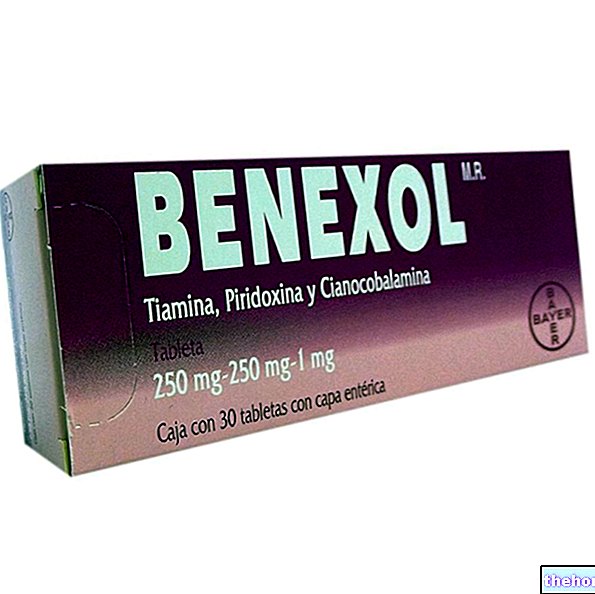Definition
With the term "retinitis" we want to indicate any type of inflammation that affects the retina, regardless of the cause that generated it.
However, we can distinguish two main forms of retinitis: infectious retinitis and retinitis pigmentosa.
Causes
Infectious retinitis is caused - as can be deduced from the name itself - by infections, which can be bacterial, viral or fungal.
Retinitis pigmentosa, on the other hand, is a hereditary-degenerative form at the base of which there appear to be malformations at the level of the photoreceptors or of the retina itself.
Symptoms
Typical symptoms of bacterial retinitis consist of reduced vision and the formation of microabscesses. In severe cases, the retina can also be destroyed and replaced with scar tissue which, in turn, can favor the detachment of the retina itself.
In viral retinitis, on the other hand, there is the formation of white retinal foci surrounded by hemorrhages that compromise vision. In addition, eye pain, photophobia and hyperemia can occur.
Symptoms of mycotic retinitis include: whitish retinal lesions and hazy crystalline, or yellowish infiltrates and hemorrhages (depending on the fungus that caused the infection), ocular pain and severe impairment of vision, up to blindness.
Patients with retinitis pigmentosa, on the other hand, suffer from the loss of the peripheral visual field ("tunnel" vision) and have difficulty in "adjusting to the dark. In most cases, retinitis pigmentosa leads to blindness.
The information on Retinitis - Retinitis Cure Drugs is not intended to replace the direct relationship between health professional and patient. Always consult your health care practitioner and / or specialist before taking Retinitis - Retinitis Treatment Drugs.
Medicines
The drug treatment of retinitis depends on the underlying cause of the inflammation.
In the case of bacterial retinitis, the infection can be triggered by the Mycobacterium tuberculosis, or from Treponema pallidum. Therefore, antibiotic therapy will be aimed at eradicating these microorganisms.
Viral retinitis is caused by infections caused by cytomegalovirus belonging to the family of Herpesviridae. The pharmacological treatment of this form of retinitis therefore involves the use of antiviral drugs.
It should also be remembered that this type of retinal inflammation is very common in immunocompromised patients, such as, for example, those suffering from AIDS.
Fungal retinitis, on the other hand, is mostly caused by infections caused by Candida albicans or from Aspergillus. In these cases, therefore, it is necessary to intervene with the administration of antifungal drugs. In addition, vitrectomy can also be used to completely eliminate the infection.
Finally, for the treatment of retinitis pigmentosa, unfortunately, there are currently no drugs available to treat it. However, it appears that daily administration of vitamin A palmitate can slow its progression and delay the onset of blindness.

The following are the classes of drugs most used in therapy against retinitis and some examples of pharmacological specialties; it is up to the doctor to choose the active ingredient and dosage most suitable for the patient, based on the severity of the disease, the state of health of the patient and his response to treatment.
Antibiotics
Antibiotics are used when retinitis is caused by bacterial infections. The main culprits of the aforementioned infections are the Mycobacterium tuberculosis and the Treponema pallidum (the same microorganisms responsible, respectively, of tuberculosis and syphilis).
Among the various active ingredients that can be used, we remember:
- Rifampicin (Rifadin ®): rifampicin is an antibiotic belonging to the class of rifamycins and used against infections caused by mycobacteria, such as the Mycobacterium tuberculosis.
It is a drug available for both oral and parenteral administration. When administered orally, the dose of rifampicin usually used ranges from 600 mg up to 1,200 mg per day, to be taken in divided doses. The exact amount of medicine to be taken will be determined by the doctor for each patient. - Doxycycline (Bassado ®, Miraclin ®): doxycycline is an antibiotic belonging to the tetracycline class that can be used to fight infections caused by Treponema pallidum. The usual dose of doxycycline used is 100-200 mg per day, to be taken orally. In any case, the doctor will determine, for each patient, how much drug to take and for how long.
Antivirals
Antiviral drugs are used for the treatment of retinitis caused by viruses, in particular, by cytomegalovirus.
Among the different drugs that can be used, we remember:
- Ganciclovir (Citovirax ®): ganciclovir is an antiviral with a chemical structure similar to that of deoxyguanosine and acts by interfering with the replication of viral DNA. It is a drug available for intravenous administration. The dose of ganciclovir to be administered must be determined by the physician according to the body weight and health conditions of each patient.
- Foscarnet (Foscavir ®): foscarnet is an antiviral with specific therapeutic indications for the treatment of cytomegalovirus retinitis in AIDS patients. The drug dose usually used is 20 mg / kg of body weight, to be administered via an intravenous infusion lasting 30-60 minutes. If deemed necessary, the doctor may decide to increase the aforementioned dose of foscarnet administered.
Antifungals
When retinitis is caused by fungal infections (caused by Candida albicans or from Aspergillus), the doctor can intervene by prescribing antifungal drugs.
Among the different types of antifungals that can be used to combat the aforementioned fungi, we remember:
- Amphotericin B (Abelcet ®): Amphotericin B is an antifungal of natural origin, isolated for the first time from cultures of Streptomyces nodosus. It is indicated both for the treatment of infections caused by Candida, both for the treatment of infections caused by Aspergillus. Amphotericin B is available for parenteral administration. The dose of drug usually used is 5 mg / kg of body weight, to be administered via a single intravenous infusion.























-nelle-carni-di-maiale.jpg)




